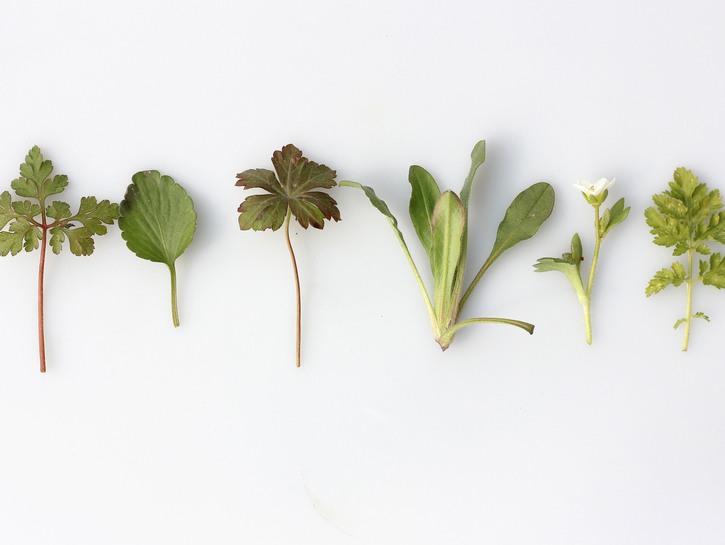Believe it or not, but any apartment, house, condo, etc. that you’re currently living in, can be transformed into your very own indoor herb garden. Instead of going to the farmer’s market or the grocery store, you can grow basil, mint, and so much more in the comfort of your own home. All you need is a little sunlight exposure, some water to feed it, and you’re well on your way to knowing how to grow herbs indoors. Here is the full variety of plants to add to your list of indoor herb garden ideas.

Basil
Basil is the unofficial king of the herbs. This highly versatile plant can be used in so many different ways, but primarily, pesto is the main beneficiary of having basil readily available. This basil pesto recipe is a great and easy way to put pesto on literally everything you eat. Thai basil, and sweet basil are other great forms of basil as well.
Here are the guidelines for growing basil indoors:
- Plant the seeds under a light layer of potting soil.
- Place it ideally by a window with southern light exposure and rotate sporadically.
- Keep the soil moist, but not soaking wet.
- Basil should be ready in a month or two.

Mint
Mint is another powerhouse in the game of herbs. There is a multitude of things that mint is used for, including this tasty mojito recipe. There are also mint juleps, mint chutney, and all of the other mint candy combinations available.
Here’s a brief guide on how to grow mint indoors:
- You can start your mint plant not with seeds, but simply by placing a mint root or sprig in soil.
- Place your mint plant where it will get full sunlight in the morning and partial sunlight in the afternoon.
- It’s important to keep your mint in a container that keeps its roots from spreading.
- Keep the soil damp and moist with water, but don’t soak it.
- Trimming your mint plant will produce even more of this herb.

Cilantro
Cilantro is a very polarizing food because some people love it, and others think it tastes like soap. For those who love it, cilantro can be used in many different dishes, including this cilantro lime rice recipe. Cilantro is also great with chicken, shrimp, salsa, and so much more.
These are some simple steps for growing cilantro in you own house:
- Use starter plants or seeds.
- Lots of sunlight in the morning and a fair amount in the afternoon.
- Don’t over water.
- Replenish when the plant has reached maturity.

Parsley
Parsley is the ultimate garnish for basically any dinner imaginable. It’s basically a food enhancer: it improves pesto, makes potatoes better, and can make great tea as well. There are just so many uses for this classic herb.
Here’s how to grow parsley indoors:
- If you start parsley from the seeds, make sure you soak the seeds in water to crack the seed coat.
- Choose a container with drainage holes.
- Use a soil-less potting mix.
- Keep parsley in the brightest light possible.

Oregano
Oregano is a must have for any Italian or Mexican dish, and it complements many other dishes as well. Just look at the wide variety of recipes that can be made using oregano. Oregano can also be made into oil that is also extremely beneficial.
Here’s how to grow oregano in your own home:
- The brighter the light the better.
- Water regularly, but don’t drown it.
- Use light and fast draining soil.

Thyme
If you haven’t added thyme to your indoor herb garden, then now is the (wait for it) time. Thyme is a great addition to steaks and many other dishes, and thyme tea is nothing to scoff at.
Here’s some tips on how to grow thyme in your house:
- Keep in bright light or full sun, preferably east facing.
- Water regularly, but not excessively.
- Use light and fast draining soil.
- Cut leaf stems or divide mature plants.
